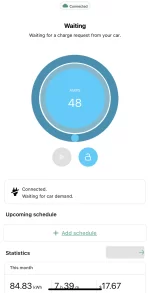Thanks to
@borski
1) The Lucid “charger” is the Wunderbox charger that is built into the car. However, you’ll hear “charger” overused to mean EVSE because EVSE is so much more annoying to say.
2) EVSE is “Electric Vehicle Supply Equipment.” It is the generic term for the device that regulates the charging, typically third party. For example, Electrify America has lots of EVSEs all around the country. You may hear them called “charging stations”; same idea. There are also home EVSEs you can install, which are the ones like Wallbox pulsar plus, JuiceBox, Chargepoint, etc. *Technically*, the cable the Lucid comes with is also an EVSE, just a relatively dumb one.
3) the Lucid comes with a charging cable (or basic EVSE) in the trunk. It can be used to plug into any NEMA 14-50 outlet (where it will charge at 40 amps) or a 110v outlet (where it will trickle charge *extremely* slowly).
4) the reason to install a home EVSE is two-fold: a) if you hardwire it, it can charge at 48A on a 60A circuit (which is faster than the 40A you’d get on a 50A circuit), and b) you can schedule charging and control it remotely. If you have “time of use” pricing from your utility, the latter point is important so you don’t have to manage plugging in or unplugging manually. You do not *have* to hardwire a third party EVSE and can just plug it into a 14-50. If you do, you don’t get the extra speed but still get the charging automation.
5) if you install an EVSE, you can leave the charging cable or mobile EVSE in the trunk and use it for road trips or emergencies.
6) the Lucid Wallbox EVSE is not out yet, but we are expecting it this month or next month. It will be able to support 80A charging on a 100A circuit (assuming your wiring supports it), and will eventually support V2H (or vehicle 2 home) backup, but not at launch.
7) the charging cable the Lucid is supplied with will work just fine if you have a 14-50 and is all you need; however, be aware that most residential 14-50 outlets are not made for constant plugging and unplugging and are likely to wear out over time. You can install an industrial 14-50 outlet, but those are a bit more expensive.

